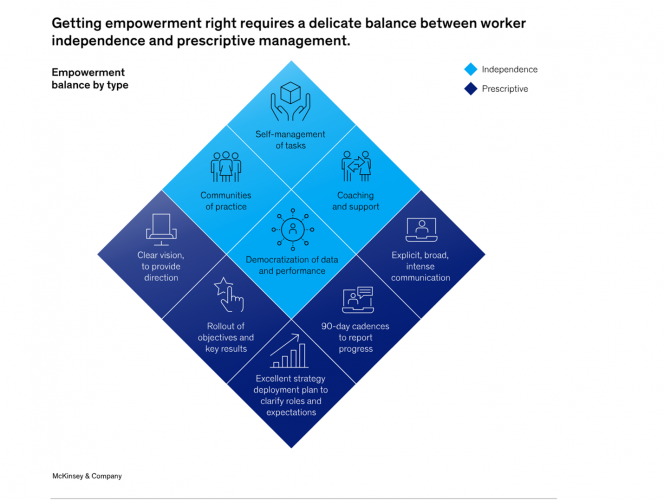Worker Skills And Autonomy Set To Grow Rapidly
Randy Wolken, President & CEO
How do you plan in a world that is becoming increasingly complex? Often, the counterintuitive answer is that you don’t. As our automated workspace grows, thousands of individual decisions organically converge to produce an essential good frequently without a centralized planning department.
Today, too many large and complex organizations have yet to emulate the decentralized production needed to be successful. They still seek to concentrate their expertise on their traditional hierarchy. They assume that the top of the organization generally knows better than the bottom. However, when it comes to understanding how operations work, those closest to production understand how to execute outcomes. The trouble is that many organizations that tried empowering employees failed and reverted to central control.
Getting delegation right requires a balance. It means giving workers the independence they need to execute tasks effectively while being prescriptive about their goals. “Independence” and “prescriptive” may sound contradictory, but as long as they are in balance, each supports the other in generating more value. Together, they call for transparency regarding access to data and the data’s implications on results. Below is a depiction of how it may look.

Defining and achieving vital results and outcomes calls for clear direction from senior leaders about the company’s strategic goals and communication at all levels of the organization. An empowered organization requires more effort from senior management, not less. For the factory team looking for ways to improve the line’s profitability, key results and outcomes would need to be tailored to the site, accounting for factors such as its position in the supply chain, its current capabilities, the training of its operators, and the needs of in-development products. Frontline workers and managers can then make intelligent trade-offs between maximizing profitability from current production and reducing potential costs for future changeovers.
McKinsey research estimated that by 2030, activities accounting for 30 percent of current work hours could be automated. Reaching this world would require the engineer to learn new skills, notably softer skills such as design thinking—critical for blending decades of hard-won expertise with the promise of AI. Leaders recognize this need: More than half of employers plan to rely on internal capability building to meet their skills needs in integrating AI into their processes.
Traditionally, industrial organizations have relied on apprenticeship-based capability building. MACNY offers these solutions to employers now. That model works well in helping many workers develop well-understood skills. However, by itself, it would not be enough to meet the scale and speed needed for the rapidly evolving world of AI and its impact on all levels of the workplace. The good news is that the upskilling gap may be shrinking because of easier access and lower cost of reskilling tools. Online courses and immersive learning platforms make upskilling more readily available on a self-service basis. Individual coursework can be slotted into day-to-day business operations, allowing continuous learning and upskilling.
The question for companies isn’t whether these workplace shifts are coming. They’re already underway. What matters is to get started, focusing on five very concrete tasks:
- Understand and shape your company’s role in the ecosystem. What do you do today better than anyone? And how will that look in five years?
- Develop visionary and courageous leaders. What leadership profiles are currently thriving in your organization? What sets them apart from others? Are they the right ones to steer your company through the technological revolution?
- Define and invest in your critical tech. In five years, what technologies will you say you wish your organization had invested in today? Which ones will need to be integrated into your tech?
- Assess capability needs. Which skills of today are likely to remain relevant in the future? What new skills are coming, and how will your organization acquire them (upskill, hire, outsource)?
- Work in teams, not in pyramids. How are your teams set up today? How much of your work is dedicated to standard tasks to keep lines running, and how much is left for innovation and improvement? Where should the empowerment balance be between independence and prescriptiveness?